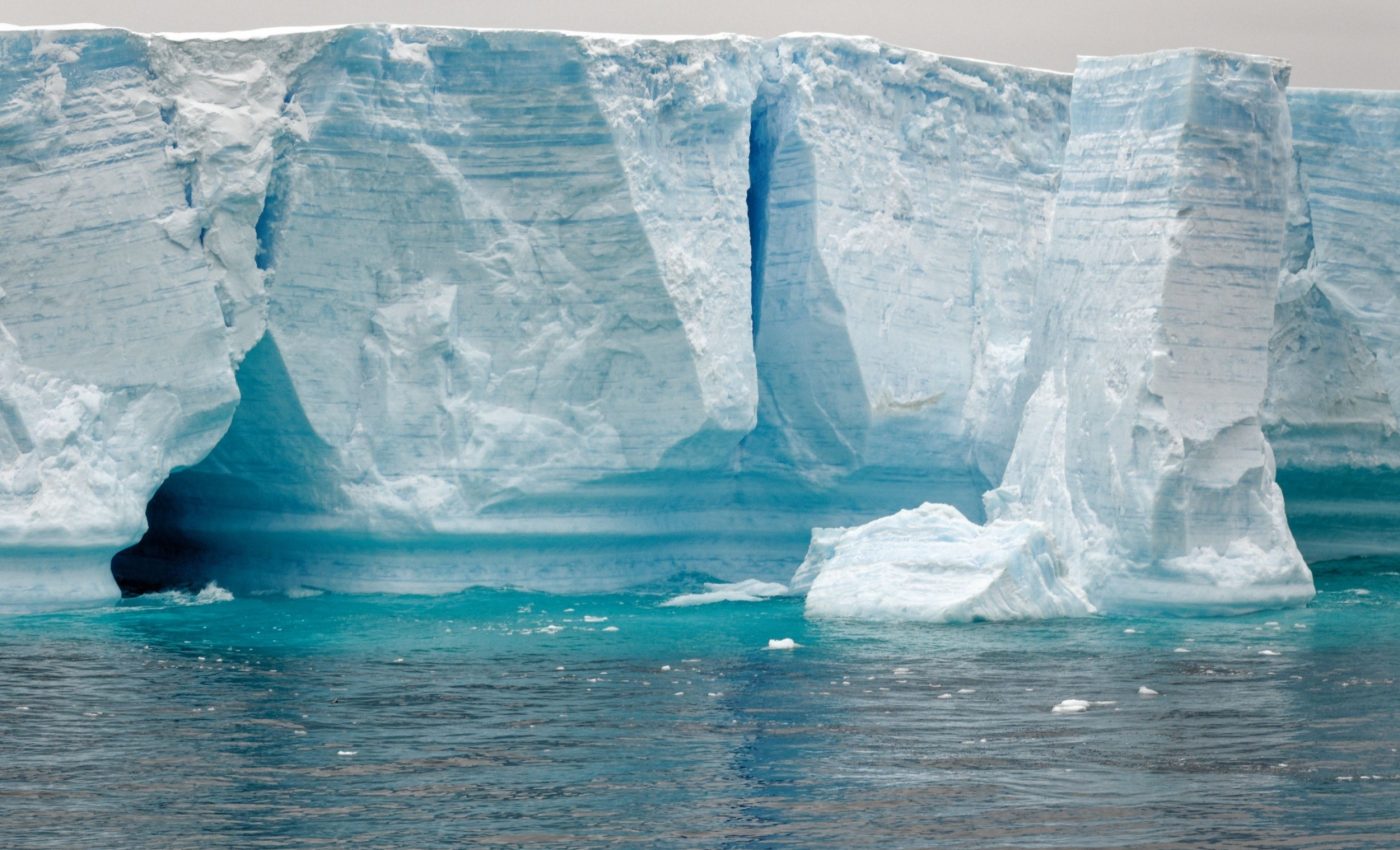
Warming oceans are pushing Antarctic ice shelves to the brink of collapse
Antarctica’s icy defenses are in trouble. A new study warns that up to 60 percent of the continent’s floating ice shelves – the massive ledges that slow the flow of glaciers into the sea – could become nonviable by 2300 if greenhouse gas emissions remain high.
That level of loss would unlock enough land ice to raise global sea levels by roughly 33 feet, reshaping coastlines worldwide.
Glaciers depend on ice shelves
These shelves act as buttresses, the holding back of inland ice by a floating ledge, which slows the seaward push of glaciers. When shelves thin or fail, glaciers speed up and sea level rises.
Decades of satellite evidence show that thinning from below by warmer water reduces this restraint.
The work was led by Clara Burgard, a researcher and climate scientist, at the Institut Pierre Simon Laplace in Paris. Her research focuses on how ocean heat and surface conditions control melting at the base of ice shelves.
After past collapses, neighboring glaciers surged and thinned, a pattern seen after the Larsen B shelf fell in 2002. That aftermath was documented in detail using satellite data.
Antarctica’s future ice melt
The team assessed when each shelf crosses a viability threshold – the point beyond which it is unlikely to keep its present-day shape.
The researchers also tracked both ocean and atmospheric warming to determine which factor dominates.
Under a high-emission future, many shelves become nonviable once global warming climbs past roughly 4.5°C (40°F). At that point, ocean heat drives rapid thinning from below, weakening the floating edges that hold back inland glaciers.
Once that threshold is crossed, the structural balance of several major shelves begins to fail. This breakdown sets off a chain reaction that accelerates ice loss and raises sea levels.
Testing Antarctica’s melt forecasts
To make long-term projections credible, the researchers use coupled climate-ice models – computer systems that link ocean, atmosphere, and ice interactions across centuries.
These models run on supercomputers for months at a time, simulating how shifts in ocean heat and air temperature reshape ice flow and melting across Antarctica.
The model used in this work drew on the latest data from satellites and ocean sensors to calibrate how quickly heat moves under each ice shelf. Researchers then compared simulated shelf thickness and stability against recent observations to check accuracy.
The close match between real-world trends and model output gives confidence that the projections reflect physical processes, not just statistical trends.
That alignment helps clarify which emission pathways keep ice shelves intact and which lead to irreversible loss.
Heat beneath the ice
Most of the extra heat trapped by greenhouse gases ends up in the ocean. An authoritative assessment finds that the ocean has absorbed about 91 percent of the added heat since the 1970s.
Warm water reaching the shelf base drives basal melt – melting at the underside of a floating shelf – which thins the ice and weakens its grip on inland glaciers.
Observed shelf volume loss has accelerated in recent decades, with some regions losing thickness rapidly. Long-term observations show a shift from near balance in the 1990s to rapid loss in the 2000s.
Critical tipping points ahead
Modeling suggests that ice shelf decline will accelerate late this century in a high-emission world. Losses are expected to climb through the 2100s before gradually easing after their peak.
But the risk is uneven. Shelves that are most exposed to persistent ocean heat – particularly around West Antarctica – are expected to cross the non-viability threshold much earlier than those in colder, more stable waters.
Keeping global warming below 2°C (3.6°F) makes a decisive difference. Under that limit, nearly all 64 major ice shelves remain structurally viable through 2300, preserving their crucial role in holding back inland ice.
Staying off the high-emission path also cuts the risk of surface-driven collapse such as hydrofracturing, where meltwater fills and forces open crevasses once shelves have already thinned.
The big unknowns about melting ice
Key uncertainties remain in how strongly basal melt rates respond to a given amount of ocean warming. A recent comparison across melt models found wide variations in melt sensitivity under 1–2°C (1.8–3.6°F) of ocean warming.
Better measurements beneath the shelves would shrink those spreads. More frequent observations near the grounding lines, the places where ice lifts off the bedrock and begins to float, are especially important.
Damage, rifting, and calving matter too. These processes can push a stressed shelf past failure even if average melt rates look modest.
The stakes for Antarctica’s future
The study reframes ice shelf stability around an actionable threshold, making the consequences of different warming paths clear for planners.
It also identifies ocean warming as the primary driver of loss in the worst-case scenario. That finding highlights the importance of tracking how much heat the Southern Ocean continues to absorb – and where that heat goes.
Ten meters (33 feet) of potential sea-level rise is not a forecast for this century. It represents the amount of sea level locked behind shelves that become nonviable in the high-emission case.
The path the world follows over the next few decades will decide how much of that potential is ever realized.
The study is published in the journal Nature.
—–
Like what you read? Subscribe to our newsletter for engaging articles, exclusive content, and the latest updates.
Check us out on EarthSnap, a free app brought to you by Eric Ralls and Earth.com.
—–













